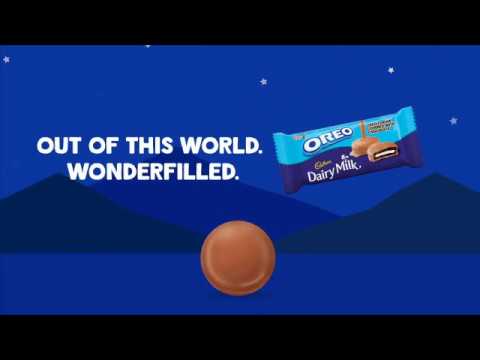How to Create Effective 6-second Bumper Ads for YouTube
Some people check their phones every 6 seconds.
6 seconds of mindfulness can make you more effective.
It takes 6 seconds for the blood in your body to go from the heart to the lungs and back.
As you can see there are a lot of things that happen in 6 seconds.
What about marketing and advertising?
Ernest Hemingway was able to tell a story in 6 words:
For sale: baby shoes. Never worn.
Can marketers and brand managers do the same?
Introduced by Vine in 2012, the short-form video hosting service where users could share six-second-long looping video clips, six years later the 6-second videos are making a comeback.
With YouTube introducing 6-second ads in 2016, marketers and brand managers have been challenged to tell stories really fast.
It seems the trend is here to stay because according to Vidyard’s 2018 Benchmark Report – Video in Business, 75% of videos produced by businesses are less than 2 minutes while 54% are up to 60 seconds.
How to Create Effective 6-second Bumper Ads for YouTube
Realeyes, the emotional intelligence platform which uses the power of AI to help brands measure their video content in terms of attention, emotions and sentiment, has the following statistics regarding 6-second videos:
- They grab similar attention as longer ads;
- They score higher attraction, happiness and engagement with teens under 19 years old than with people 30+ years old;
- They are 26% better at grabbing attention on mobile versus desktop;
- Brevity can be very effective, but it’s not about cutting down a longer story to an abbreviated version.
Start with something relatable.
Alexander Engel, Filmmaker via ThinkwithGoogle
How-to create effective 6-second ads according to Realeyes:
- Go native: create for the channel you will broadcast the video ad on;
- Don’t use cut-downs;
- Don’t compromise on the aspect ratio;
- Deliver a concise message: don’t cram too much into six seconds;
- Rather than trying to tell a whole story, you can use the 6-seconds ad to entice the audience to begin a campaign journey with a clear call-to-action to “swipe up”;
- If possible don’t edit the scenes;
- Keep your visuals free of distractions;
- Keep your copy simple.
Key takeaways from Realeyes regarding the 6-second ads:
- 3x more emotional impact per second than 30-sec videos;
- 2.7x more effective when used as a campaign reminder than a teaser;
- 43% more emotionally engaging when placed alongside premium content;
- 40% more emotionally engaging for digital natives;
- 26% better at grabbing attention on mobile versus desktop;
- Up to 1.6x more emotionally engaging than the average Super Bowl ad.
Google, which acquired YouTube in 2006 is using its powerful resources to gather consumer insights, map out culture, trends and industries benchmarks. ThinkwithGoogle is rich with latest stories, data and inspiration.
Keep everything simple.
Lawrence Chen, Director, BBDO —Daniel Adrain, Creative Director, BBDO via ThinkwithGoogle
Here are the Dos and Don’ts of creating effective YouTube 6-second bumper ads according to Google:
- Creativity loves constraints so it’s no surprise that 6-second video ads have unleashed a tidal wave of creative, innovative storytelling;
- Begin with a striking visual and build the story around it;
- Immediately let your viewers know they’ve stepped into your brand’s space;
- Avoid the temptation to cram too much into the opening, which may confuse viewers;
- Leave viewers with a clearly expressed final thought or call to action that’s given enough time to sink in;
- Focus on keeping it simple and delivering it well;
- Leverage simple visuals or a striking headline with music;
- Go beyond a single ad to a series of six-second spots that may explore different facets of an idea or message;
- Plan for 6 seconds.
The Harvard Business Review conducted a research in an attempt to discover what makes an ad go viral. Although the study looks at all video ads irrespective of their length, the findings are useful because they pinpoint 5 problems and offers 5 solutions.
Build curiosity.
Lake Buckley, Filmmaker via ThinkwithGoogle
4 tips and tricks to create effective video ads according to the Harvard Business Review:
1. Problem: Branding puts off viewers
The researchers found that the more prominent or intrusive the logo, the more likely viewers are to stop watching even if they know and like the brand.
Solution: Weave the brand image unobtrusively throughout the ad. Ask yourself: If I remove the brand image, will the content still be intrinsically interesting? If the answer is yes, viewers are more likely to keep watching.
2. People get bored right away
People may start viewing the ad, but they lose interest very quickly. Harvard Business Review found that keeping viewers involved depended in large part on two emotions: joy and surprise.
Solution: Today’s online viewers need to be hooked in the opening seconds so create joy or surprise right away.
3. People Watch for a While but Then Stop
As a marketer you know that your ad must play the emotional card to be effective. Surprisingly, ads that produce stable emotional states generally aren’t effective at engaging viewers for very long.
Solution: Building emotion into your ad is important but equally important is how you build it. Give your viewers an emotional roller coaster.
4. People Like an Ad but Won’t Share It
A viral ad is not build on viewership alone, but on the number of shares it gets – that’s what marketers and brand managers look for. Even though people may enjoy an ad themselves, they won’t always send it to others.
Solution: Surprise your viewers, but don’t shock them.
The power of smell as a tool in the marketing strategy
Businesses looking to sniff out a commercial opportunity have been aware of its power for a long time. According to the Sense of Smell Institute, people are able to recognize approximately 10,000 different odors and are able to recall smells with 65% accuracy after a year, in contrast to only 50% of visuals after three months.

source: Stuff
Martin Lindstrom found that brand impact increased by 30% when more than one sense is engaged and by a whopping 70% when three senses are integrated into the brand message. Scents have an immediate and compelling effect as they are directly linked to the brains limbic system which is the part of the brain responsible for our memories and emotions. Therefore scents go beyond our rational perception and have an ultimate impact on our emotions.
Moreover, smell is the most powerful and emotional of all the senses. By using scent, brands are able to connect with consumers on a deeper emotional level, resulting in a more memorable experience. Scent can attract new customers, increase sales, heighten value perception, and expand brand recognition and customer satisfaction. A scent has the ability to influence behavior and trigger memories almost instantaneously. When smell is combined with other marketing cues, it can amplify a brand experience and establish a long lasting connection with consumers.
The right scent can depend on several factors. Research by Eric Spangenberg, the dean of the college of business at Washington State University, who has been researching the effect of smell on customer behavior since 1996, has found that it affected everything from cultural norms, gender and appropriateness to the product. “Another area where we’ve seen effects is if you’ve got a scent that’s congruent with a season. So, for instance, shopping and the seasonal effects of scent – people expect Christmas to smell like cinnamon or something like that,” he says.
Comparing this with a scent more appropriate for Easter, he found positive effects for the seasonal smell and negative effects for the incongruous one. “Using the correct smell is crucial. For businesses across many sectors, getting their fragrances right could mean the difference between the lingering stench of failure or the sweet smell of success,” writes The Independent UK.
“Smell has been a somewhat neglected sense in terms of being used to help differentiate brands, so scents are one of the final frontiers for marketers,” explains Maureen Morrin, professor of marketing at Temple University’s Fox School of Business and coauthor of a research study on the effects of ambient scent on consumer preferences and choice behaviors. “Hotels have created their own proprietary scents that are not just emitted in public spaces, such as the lobby and workout rooms but also often integrated into their toiletries. Not only is the odor pleasant, but it also comes to have unique associations with the brand over time,” she added, quoted by Sarah Bergen for Lodging Magazine.
Because sense of smell is tied to the side of the brain that processes memories and emotions, the appropriate use of scent can positively impact the perception of a brand, customer loyalty, and even the attitude of the staff. “We’re where music was 15 years ago. You wouldn’t walk into an established retailer today without some sort of music playing, but that wasn’t the case 15 or 20 years ago. You can walk into a beautifully designed space, and it’s rendered meaningless if there’s a bad smell or an absent smell,” said Roger Bensinger, exec VP of AirQ by Prolitec, which works with Abercrombie & Fitch, Hard Rock Hotel & Casino and Giorgio Armani, among others, quated by AdAge. ”
The researchers hypothesized that the degree of complexity of a scent may affect the consumer’s ability to process that olfactory information. The less complex a scent, the easier it is to process, and the greater its influence on associated attitudes and behaviors. This should translate into more favorable consumer responses to the retail environment and associated products.
